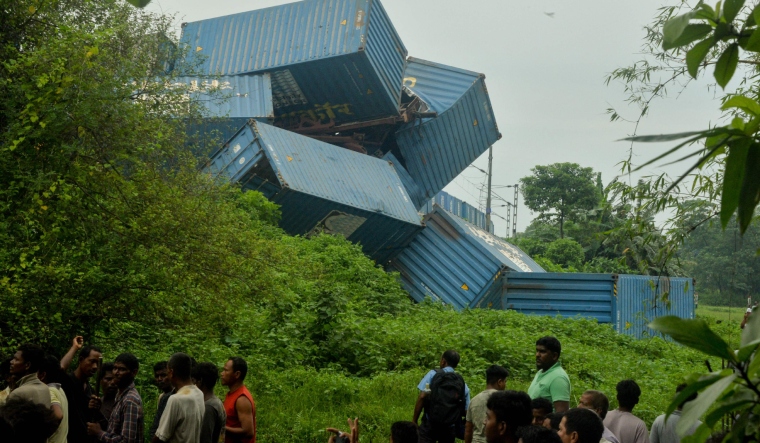At least nine people died and 60 others were injured after three rear coaches of the stationary Sealdah-bound Kanchanjunga Express derailed on Monday morning as a goods train collided with it in West Bengal's Darjeeling district. The deceased include the pilot and co-pilot of the goods train, and the guard of the passenger train, a senior railway official said.
The toll could rise, as multiple agencies of the state and Centre were simultaneously working on a war footing along with locals to rescue passengers who could still be trapped inside, they said.
As things stand, here are 10 points that you need to know about the train accident.
1. The automatic signalling system between Ranipatra Railway Station and Chattar Hat Junction in West Bengal, where a goods train hit Sealdah Kanchanjunga Express in the rear, was defective since 5.50 in the morning, according to a railway source.
2. "Train No 13174 (Sealdah Kanchanjunga Express) departed Rangapani station at 8:27 am and stopped between Ranipatra railway station and Chattar Hat due to automatic signalling failure from 5:50 am," the source told news agency PTI.
3. According to another railway official, when the automatic signalling system fails, the station master issues a written authority called TA 912, which authorises the driver to cross all red signals in the section because of the defect.
ALSO READ | Kanchanjunga Express mishap: Goods train loco pilot killed, rescue ops complete
4. "The station master of Ranipatra had issued TA 912 to Train No 1374 (Sealdah Kanchanjunga Express). Around the same time, a goods train, GFCJ, departed Rangapani at 8:42 am and hit 13174 in the rear portion..."
5. Sources said that an investigation alone can establish whether the goods train was also given TA 912 to cross defective signals at speed or if it was the loco pilot, who violated the defective signal norm. If it is the latter, the driver was supposed to stop the train for one minute at each defective signal and move on with 10 kmph speed.
6. The Railways' 'Kavach' or anti-train collision system was not in place along the Guwahati-Delhi route, where a goods train collided with the Sealdah Kanchanjunga Express in the rear on Monday, a top official said.
7. According to a top official, the collision near New Jalpaiguri may have happened because the goods train disregarded the signal and hit the Kanchanjungha Express.
8. The production of the 'Kavach' safety system has to be ramped up by the suppliers for ensuring faster implementation of the Kavach project across the country's railway network.
ALSO READ | What caused the train accident in Siliguri? Key points
9 Sinha said the injured were shifted to the North Bengal Medical College and Hospital in Siliguri and were being treated there.
10. The loco pilot's body has questioned the Railways' statement that the driver violated the red signal. "It is highly objectionable to announce the dear loco pilot responsible when he is dead and CRS inquiry pending," Sanjay Pandhi, the working president of the Indian Railway Loco Runningmen Organisation (IRLRO), said.
- WIth PTI inputs


